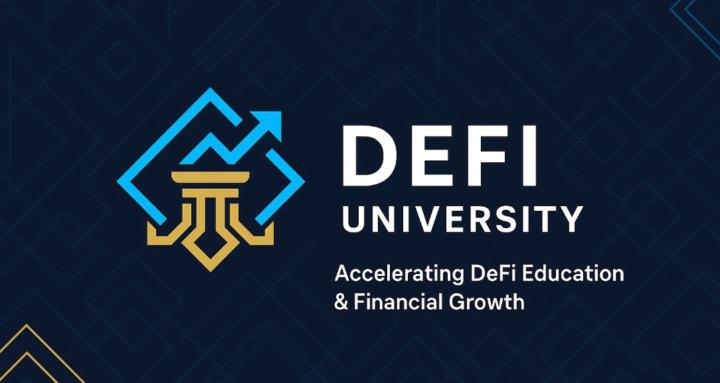Jul 11 (edited) • Building In Public
Building a DeFi Course with Cursor and Claude Code
In the spirit of building in public, I'd like to share a little bit about the tools that I have been using to build DeFi U, and which honestly could be used to build just about anything you can think of. I'll take a screenshot of Cursor and feed it to Claude then highlight how I use these tools together. That is a good starting point.
I used Grok 4 Heavy to analyze the screenshot and generate this overview of my AI assisted workflow, then I fed that overview to Claude 4 Sonnet to improve the formatting of the content so that us humans can more easily read through it. Markdown format is kinda straining for the eye.
DeFi University Course Development Workspace
🏗️ Workspace Layout Overview
📁 Project Sidebar (Left Panel)
The left sidebar displays the hierarchical folder structure of the DeFi University Skool Course project:
Course Modules:
• Module-0-Getting-DeFi-Ready
• Module-1 through Module-7-Sustainable-DeFi-Mastery
Supporting Directories:
• plans/ - Project planning documents
• scripts/ - Automation scripts
• templates/ - Content templates
Key Files:
This systematic organization enables efficient navigation and AI-assisted content generation for each module.
📑 Editor Tabs (Top of Main Area)
Multiple active tabs facilitate seamless content switching:
Currently Active:
Background Tabs:
• DeFi University Skool Course - Project overview
• Additional lesson files
This setup allows rapid switching between editing lesson content and project management, with Claude integration assisting in markdown content generation and refinement.
✏️ Main Editor Content (Central Pane)
The central editor displays the active lesson content:
Available Panels:
• Content editing area
• Debug console
• Terminal integration
• Port management
AI Integration Features:
• Auto-generated content iteration
The editor serves as the primary workspace for AI-driven content creation and refinement.
💻 Integrated Terminal/Console (Below Editor)
The terminal panel provides real-time execution feedback:
Log Types:
• ✅ Successful operations
• ❌ Error messages (e.g., "File has not been read yet")
• 📝 Command execution logs
• 📊 Repository analysis summaries
Key Activities:
• Python script execution
• Claude-integrated automation tasks
• Content generation workflows
• Project analysis and updates
This terminal enables automated DeFi course material creation through Python scripts with Claude integration.
🎯 Right Sidebar (Outcomes and Prompt Panel)
The right panel outlines project goals and AI prompting:
Expected Outcomes:
• 15-20 Interactive Plotly Visualizations
• Enhanced learner engagement through data-driven visuals
• Improved educational effectiveness
AI Prompting Section:
• Detailed prompts for Claude integration
• Visualization planning guidance
• Educational enhancement strategies
This panel demonstrates strategic use of Claude's AI capabilities for designing course improvements.
📊 Status Bar (Bottom Window)
The bottom status bar displays workspace controls:
Update Management:
• Install Now - Available updates
• Edit counters (e.g., +286-239)
AI Integration:
• auto-accept edits toggle
• oo Agent 101 > claude-4-opus MAX - Active AI model
System Status:
• Node terminal indicators
• File modification tracking
The status bar highlights Cursor's AI integration features for real-time editing assistance.
🔄 Overall Workflow Insight
AI-Enhanced Course Development Process
Step 1: Content Generation
• Run Python scripts (generate_content_driven_*.py)
• Leverage Claude for automated content creation
• Generate module-specific materials
Step 2: Analysis & Refinement
• Review terminal outputs and logs
• Analyze repository structure and content
• Iterate based on AI suggestions
Step 3: Content Editing
• Edit markdown lessons in central pane
• Use right-side prompts for planning
• Implement AI-suggested improvements
Step 4: Integration & Testing
• Coordinate visualizations (Plotly integration)
• Test generated content
• Validate educational effectiveness
🚀 Key Benefits of This Workflow
✅ Automated Content Creation - Python scripts with Claude integration
✅ Real-time AI Assistance - Continuous editing suggestions
✅ Systematic Organization - Hierarchical project structure
✅ Iterative Development - Terminal feedback loops
✅ Enhanced Visualizations - Plotly integration planning
✅ Quality Assurance - AI-driven content analysis
This demonstrates a cutting-edge, AI-assisted process for educational course development, specifically tailored for DeFi University's comprehensive curriculum.
3
10 comments

skool.com/defiuniversity
Master DeFi from beginner to advanced. Security-first curriculum, live mentorship, gamified learning. Join us and build DeFi expertise safely.
Powered by





